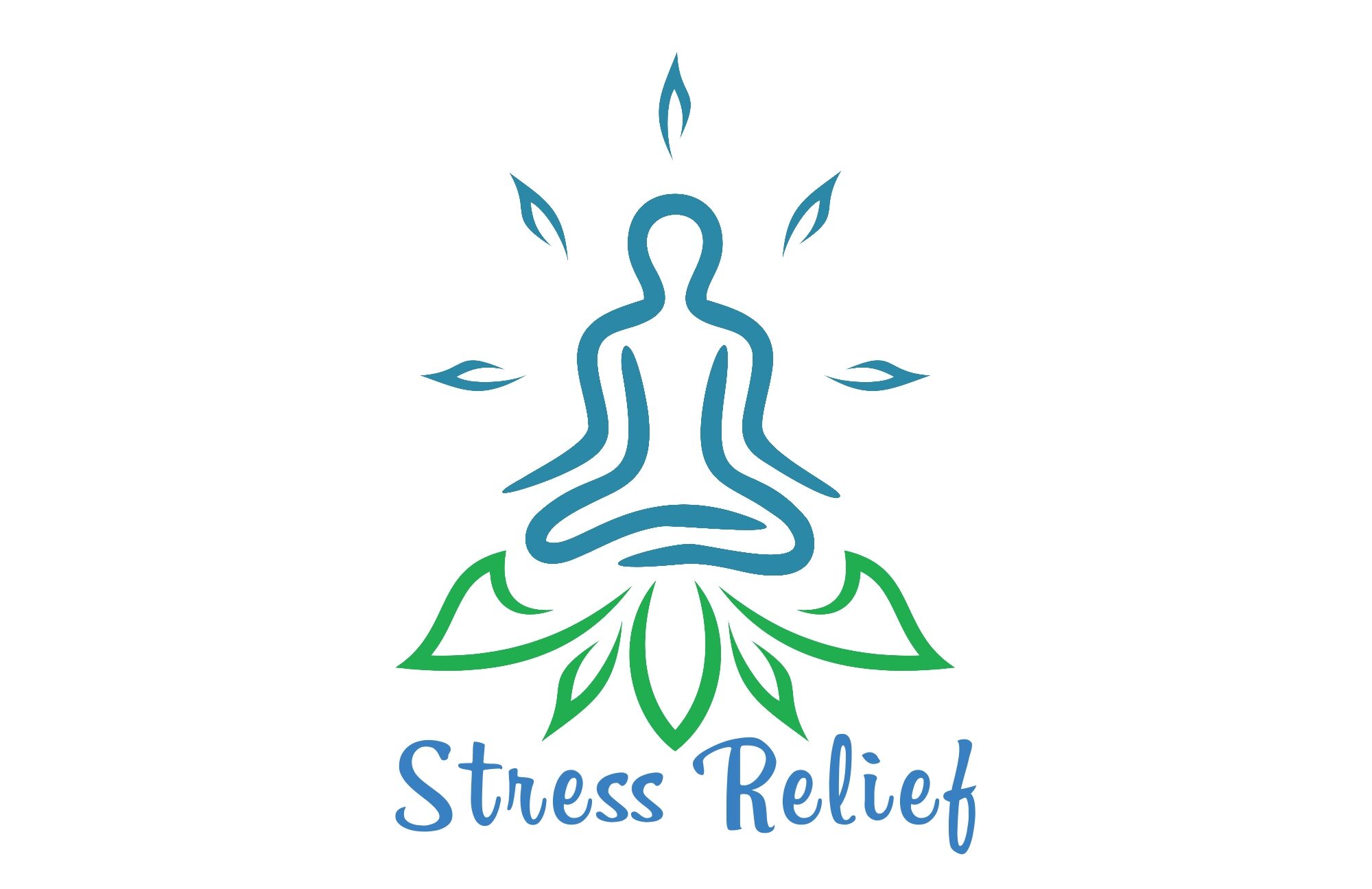Introduction
In today’s fast-paced and demanding world, high-stress environments have become all too common. Whether it’s in the workplace or other areas of life, excessive stress can have detrimental effects on both mental and physical-being. That’s why it’s important to prioritize stress relief exercises that can help mitigate the negative impact stress. In this article, we will explore various techniques and strategies to manage stress in high-stress environments effectively. By incorporating mindfulness techniques, physical activities, cognitive strategies, and seeking social and emotional support, individuals can better manage stress and improve their overall quality of life. In this article we will learn about stress relief exercises for high-stress environments.
1. Understanding Exercises For High-Stress Environments
1.1 Definition and Impact of Stress in High-Stress Environments
Stress, in its simplest form, is the body’s response to demands or pressure. In high-stress environments, individuals are often exposed to excessive workload, tight deadlines, and intense competition, leading to heightened levels of stress. This chronic stress can have severe consequences on both physical and mental health. It can manifest as fatigue, irritability, headaches, difficulty sleeping, and even more serious conditions such as anxiety disorders and depression. Recognizing and understanding the impact of stress in high-stress environments is the first step towards effectively managing it.

1.2 Common Symptoms and Effects of Stress
Stress can manifest itself in a variety of physical, emotional, and cognitive symptoms. Physical symptoms may include tense muscles, increased heart rate, and digestive issues. Emotionally, stress can lead to feelings irritability, anxiety, and mood swings. On a cognitive level, individuals may experience difficulty concentrating, making decisions, or memory problems. Left unchecked, stress can significantly impair one’s overall well-being and productivity.
1.3 The Importance of Managing Stress in High-Stress Environments
Managing stress in high-stress environments is crucial for maintaining optimal well-being and productivity. Unmanaged stress can lead to burnout, decreased job satisfaction, strained relationships, and even serious health conditions. Incorporating stress relief exercises into daily routines can help individuals cope with the demands of high-stress environments effectively.
Mindfulness and Relaxation Techniques
2. Deep Breathing Exercises
Deep breathing exercises are a simple yet powerful technique to induce relaxation and alleviate stress. By focusing on the breath, individuals can activate the parasympathetic nervous system, triggering a relaxation response in the body.
2.1 Belly Breathing Technique
Belly breathing, also known as diaphragmatic breathing, involves taking slow, deep breaths, allowing the diaphragm to expand fully. To practice belly breathing, sit or lie down in a comfortable position. Place one hand on your belly and the other on your chest. Take a deep breath in through your nose, allowing your belly to rise as you fill your lungs with air. Exhale slowly through your mouth, feeling your belly naturally lower. Repeat this technique for a few minutes to induce a sense of calm and relaxation.
2.2 Box Breathing Technique
Box breathing is a technique often used by Navy SEALs to manage stress and maintain focus. To practice box breathing, visualize a square. Inhale deeply through your nose for a count of four, imagining tracing the first side of the square. Hold your breath for a count of four, tracing the second side. Exhale slowly through your mouth for a count of four, tracing the third side. Finally, hold your breath again for a count of four, completing the square. Repeat this process for a few minutes to restore a sense of calm and balance.
2.3 Progressive Muscle Relaxation (PMR)
Progressive muscle relaxation is a technique that involves systematically tensing and then releasing different muscle groups in the body to promote relaxation. Start by finding a quiet and comfortable space. Close your eyes and begin by tensing the muscles in your toes for a few seconds, then release the tension and notice the sensation of relaxation. Move systematically through each muscle group, from your feet up to your head, tensing and releasing as you go. Progressive muscle relaxation helps release physical tension and promotes a deep sense of relaxation.
3. Meditation Practices

Meditation is a powerful tool for stress reduction in high-stress environments. It involves training the mind to focus on the present moment, cultivating a sense of calm and mental clarity.
3.1 Guided Visualization Meditation
Guided visualization meditation involves using your imagination and visualization to create a relaxing and peaceful mental image. Find a quiet space, sit comfortably, and close your eyes. With the help of a guided meditation app or an experienced meditation teacher, imagine yourself in a serene and calming environment. Visualize the sights, sounds, and sensations of this peaceful place, allowing yourself to fully immerse in it. This form of meditation can transport you away from the stresses of the high-stress environment and provide a respite for your mind.
3.2 Mindfulness Meditation
Mindfulness meditation is the practice of directing attention to the present moment without judgment. Sit comfortably in a quiet space and bring your awareness to the sensation of your breath, the sounds around you, or the physical sensations in your body. Whenever your mind wanders, gently bring it back to the present moment without judgment. Mindfulness meditation can help increase self-awareness and reduce stress by shifting the focus away from worries or future concerns.
3.3 Loving-Kindness Meditation
Loving-kindness meditation is a practice that involves directing positive and compassionate thoughts towards oneself and others. Find a quiet and comfortable space, sit in a relaxed position, and close your eyes. Begin by silently repeating phrases such as “May I be happy. May I be healthy. May I be at peace.” After focusing on oneself, extend these wishes to loved ones, acquaintances, and even challenging individuals in your life. This practice cultivates a sense of compassion, empathy, and connection, which can help reduce stress and foster positive relationships in high-stress environments.
4. Grounding Techniques
Grounding techniques are strategies that help individuals reconnect with the present moment and their physical surroundings. These techniques can be especially useful during moments of high stress or anxiety.
4.1 Five Senses Technique
The five senses technique involves actively engaging your senses to refocus your attention on the present moment. Start by taking a few deep breaths to center yourself. Then, take a few moments to notice five things you can see, four things you can touch, three things you can hear, two things you can smell, and one thing you can taste. This exercise helps redirect attention away from stressors and promotes a sense of grounding and stability.
4.2 Grounding Objects and Anchors
Grounding objects and anchors are physical items that provide a sense of comfort and stability. This could be a small object, such as a stress ball or a smooth stone, that you can hold in your hand and focus on when stress arises. Anchors, on the other hand, are visual or auditory cues that help bring you back to the present moment. For example, a photograph or a meaningful song can serve as an anchor to ground yourself and alleviate stress in high-stress environments.
4.3 Nature Walk or Outdoor Connection

Connecting with nature is a powerful way to reduce stress in high-stress environments. Take breaks during the day to go for a walk in a nearby park or simply spend a few moments outside in fresh air and natural surroundings. Research has shown that spending time in nature can significantly lower stress levels and improve overall well-being. The sights, sounds, and smells of the natural world can help shift your focus away from stressors and provide a sense of calm and rejuvenation.
Physical Stress Relief Activities
Physical activities are not only beneficial for physical fitness but also play a crucial role in stress reduction in high-stress environments. Engaging in regular exercise and movement can help release tension, improve mood, and increase overall resilience to stress.
5. Exercise and Physical Activity
Regular exercise is essential for managing stress in high-stress environments. Engaging in physical activities releases endorphins, the body’s natural feel-good chemicals that can boost mood and reduce stress.
5.1 Cardiovascular Exercises (Walking, Jogging, Cycling)
Cardiovascular exercises, such as walking, jogging, or cycling, are great stress-busting activities. These exercises get your heart rate up, increase circulation, and promote the release of endorphins. Aim for at least 30 minutes of moderate-intensity cardiovascular exercise most days of the week to experience the stress-reducing benefits.
5.2 Yoga and Stretching Routine
Yoga and stretching routines combine physical movement with breath awareness and mindfulness, making them effective stress relief exercises. Regular practice of yoga can help increase flexibility, release muscle tension, and promote relaxation. From gentle stretching to more dynamic styles, there is a type of yoga suitable for everyone.
5.3 High-Intensity Interval Training (HIIT)
High-Intensity Interval Training (HIIT) is a form of exercise that involves short bursts of intense activity followed by short recovery periods. HIIT workouts can be highly effective for stress reduction as they not only provide physical benefits but also help release pent-up energy and tension. These workouts can be adapted to suit individual fitness levels and can be done in a short amount of time, making them convenient for individuals in high-stress environments.
6. Desk Stretches and Ergonomics
In high-stress environments, individuals often spend a significant amount of time at their desks. Incorporating desk stretches and practicing proper ergonomics can help alleviate the physical stress associated with prolonged sitting and repetitive movements.
6.1 Neck and Shoulder Stretches

Neck and shoulder stretches can relieve tension and stiffness caused by long hours spent working at a desk. To perform a simple neck stretch, sit up straight and gently tilt your head to one side, bringing your ear closer to your shoulder. Hold the stretch for a few seconds, then repeat on the other side. Shoulder rolls and shrugs are also effective in releasing tension in the upper body.
6.2 Wrist and Hand Exercises
Individuals who spend long hours typing or performing repetitive hand movements can benefit from wrist and hand exercises. Simple exercises include wrist circles, finger stretches, and hand squeezes. These exercises promote blood circulation, reduce stiffness, and prevent the risk of repetitive strain injuries.
6.3 Proper Posture and Ergonomic Tips
Maintaining proper posture and utilizing ergonomic equipment is essential in preventing muscular imbalances and reducing physical stress in high-stress environments. Ensure that your desk and chair are properly adjusted to support a neutral spine position. Take breaks every hour to stretch, change positions, and give your body a rest from sustained postures.
7. Guided Relaxation Techniques
Guided relaxation techniques offer a structured and soothing approach to stress relief. They provide individuals with instructions and cues to help relax their mind and body, promoting a state of deep relaxation and rejuvenation.
7.1 Yoga Nidra
Yoga Nidra, also known as yogic sleep, is a guided relaxation practice that induces a deep state of relaxation while maintaining full consciousness. During a Yoga Nidra session, individuals lie down in a comfortable position and follow the voice of a trained instructor who will guide them through different stages of relaxation. The practice promotes deep rest, alleviates stress, and enhances overall well-being.
7.2 Body Scan Exercise
The body scan exercise involves systematically directing attention to different parts of the body, noticing sensations, and releasing tension. Lie down on your back in a comfortable position and close your eyes. Starting from your toes, slowly and mindfully move your attention up through your body, paying attention to any areas of tension or discomfort. As you become aware of tension, consciously relax that part of your body, releasing any stress or tightness. This exercise promotes body awareness, relaxation, and stress reduction.
7.3 Tai Chi or Qigong Practice
Tai Chi and Qigong are ancient Chinese practices that combine slow, flowing movements, deep breathing, and meditation. These practices promote balance, relaxation, and mindfulness. Engaging in Tai Chi or Qigong can help reduce stress and increase energy levels in high-stress environments. Attending a class or following instructional videos online can be a great way to learn and incorporate these techniques into your routine.
Cognitive Techniques for Stress Reduction
Cognitive techniques involve strategies to manage stress by examining and modifying thought patterns and perspectives. These techniques can help individuals develop a more positive and resilient mindset towards stress in high-stress environments.
8. Cognitive Restructuring

Cognitive restructuring involves identifying and challenging negative thought patterns that contribute to stress. By examining the accuracy and validity of these thoughts, individuals can reframe or replace them with more realistic and positive beliefs.
8.1 Identifying Negative Thought Patterns
The first step in cognitive restructuring is to become aware of negative thought patterns. Common examples include catastrophizing, overgeneralizing, and negative self-talk. Pay attention to the thoughts that arise during stressful situations and reflect on how they may contribute to increased stress levels.
8.2 Challenging Negative Thoughts
Once negative thought patterns are identified, it’s important to challenge their validity. Ask yourself if there is evidence that supports or refutes these thoughts. Are there alternative explanations or more positive interpretations? By challenging negative thoughts, individuals can develop a more balanced and realistic perspective.
8.3 Reframing and Positive Affirmations
Reframing involves replacing negative thoughts with more positive and empowering ones. Instead of dwelling on worst-case scenarios, focus on potential solutions and positive outcomes. Positive affirmations, such as “I am capable of handling this challenge” or “I am resilient and can overcome obstacles,” can help counteract negative self-talk and foster a more optimistic mindset.
Journaling and Expressive Writing
9.1 Stress Diary and Emotional Release
One effective way to relieve stress in a high-stress environment is through journaling and expressive writing. Keeping a stress diary allows individuals to identify and track the specific stressors they experience throughout the day, providing valuable insight into patterns and triggers. By jotting down thoughts and emotions associated with these stressors, individuals can release built-up tension and gain clarity on their feelings. Writing about stressful events can serve as an emotional release, helping to process and cope with the challenges of a high-stress environment.
9.2 Gratitude Journaling
In the midst of a high-stress environment, it can be easy to overlook the positive aspects of life. Gratitude journaling is a powerful exercise that involves writing down things individuals are grateful for each day. By focusing on the positive aspects of life, individuals can shift their mindset and reframe their perspective on the stressful situations they encounter. Regular practice of gratitude journaling has been shown to reduce stress levels, enhance overall well-being, and improve sleep quality.
9.3 Problem-Solving and Action Plan Journaling
Sometimes, stress in high-stress environments can stem from feeling overwhelmed by tasks and responsibilities. Problem-solving and action plan journaling can help individuals break down complex situations into manageable steps. By writing down the problems they face and potential solutions, individuals can gain a sense of control and develop action plans to tackle these stressors effectively. This exercise promotes critical thinking and a proactive approach to problem-solving, ultimately reducing the stress and anxiety associated with high-stress environments.
Time Management and Priority Setting
10.1 Effective Time Management Strategies

One of the primary sources of stress in high-stress environments is the lack of time to accomplish all the tasks at hand. Effective time management strategies can significantly alleviate this stress. Techniques such as creating to-do lists, prioritizing tasks based on urgency and importance, and breaking down larger tasks into smaller manageable chunks can all contribute to better time management. By implementing these strategies, individuals can create a sense of structure and control over their workload, resulting in reduced stress and improved productivity.
10.2 Setting Realistic Goals and Deadlines
Setting realistic goals and deadlines plays a vital role in managing stress in high-stress environments. Unrealistic expectations and constant pressure to meet demanding targets can lead to burnout and increased stress levels. By setting achievable goals and reasonable deadlines, individuals can maintain a healthy work-life balance and prevent an overwhelming sense of stress. It is important to remember that it is better to aim for progress rather than perfection.
10.3 Delegation and Saying No when necessary
In high-stress environments, individuals often feel the need to take on too many responsibilities, fearing they will let others down if they say no. However, learning to delegate tasks and assertively say no when necessary is crucial for stress reduction. Distributing tasks among teammates and learning to set boundaries can lighten the workload and prevent feelings of being overwhelmed. It is important to remember that taking on too much can lead to decreased efficiency and increased stress levels.
Social and Emotional Support in High-Stress Environments
11.1 Establishing Strong Support Systems
Having a strong support system is essential for coping with stress in high-stress environments. Building a supportive network of friends, family, or colleagues who understand the challenges of the environment can provide a sense of belonging and emotional support. Regularly connecting with individuals who can empathize and offer guidance can help alleviate stress by providing an outlet for venting frustrations and receiving valuable advice.
11.2 Seeking Professional Help and Therapy
In some cases, the stress in high-stress environments may become overwhelming, necessitating professional help. Seeking therapy or counseling can provide individuals with the tools and techniques to effectively manage stress. Therapy offers a safe space to explore stress triggers, develop coping mechanisms, and gain a deeper understanding of oneself. Trained professionals can guide individuals through difficult emotions and provide strategies tailored to their specific needs.

11.3 Employee Assistance Programs (EAP)
Many workplaces offer Employee Assistance Programs (EAP) for employees facing high-stress environments. EAPs typically provide counseling services, mental health resources, and assistance with work-life balance. These programs can be valuable in providing confidential support to individuals struggling with stress. Taking advantage of these resources can help individuals navigate the challenges of a high-stress environment and promote overall well-being.
Effective Communication and Boundary Setting
12.1 Active Listening and Empathy
Effective communication skills are crucial for managing stress in high-stress environments. Active listening and empathy allow individuals to understand and respond effectively to the concerns and needs of others. By practicing active listening, individuals can foster a supportive and collaborative work environment, reducing workplace stress. When colleagues feel heard and supported, it creates a sense of unity and promotes overall well-being.
12.2 Assertiveness Training
Being able to express oneself assertively is essential for managing stress in high-stress environments. Assertiveness training helps individuals communicate their needs, boundaries, and opinions in a respectful and confident manner. By clearly expressing oneself and setting appropriate boundaries, individuals can reduce the likelihood of misunderstandings and conflicts, ultimately reducing stress levels.
12.3 Setting Boundaries and Prioritizing Self-Care
Setting personal boundaries and prioritizing self-care is crucial in high-stress environments. Establishing clear limits on work hours, taking breaks when needed, and engaging in activities that promote relaxation and rejuvenation are essential for managing stress levels. By setting boundaries and making self-care a priority, individuals can recharge both physically and mentally, resulting in increased resilience and reduced stress.
Stress Reduction in Relationships
13.1 Enhancing Emotional Connection
Building and maintaining strong relationships can significantly contribute to stress reduction in high-stress environments. Taking the time to enhance emotional connections with loved ones helps individuals feel supported and understood. Engaging in open and honest communication, expressing love and appreciation, and prioritizing quality time together can all strengthen relationships, ultimately reducing stress and promoting overall well-being.
13.2 Quality Time and Intimacy

In high-stress environments, individuals often neglect quality time and intimacy with their partners. However, fostering a healthy work-life balance involves setting aside time for meaningful connections. Engaging in shared activities, going on dates, and expressing affection are essential for reducing stress and keeping relationships strong.
13.3 Conflict Resolution Techniques
Conflict is inevitable in any relationship, but in high-stress environments, it can add an additional layer of stress. Learning effective conflict resolution techniques, such as active listening, compromising, and finding common ground, can help manage and minimize relationship stress. By resolving conflicts in a healthy and constructive manner, individuals can strengthen their relationships and create a supportive environment.
Summary
In conclusion, prioritizing stress relief exercises is crucial in high-stress environments to maintain overall well-being and productivity. By incorporating mindfulness techniques, physical activities, cognitive strategies, and seeking social and emotional support, individuals can effectively manage stress and improve their quality of life.



